With its unique rock formations and Joshua Tree against a harsh desert backdrop, Joshua Tree National Park is one of the most beautiful and intriguing places on earth.
In addition to the rock formations and their impressive sizes, the trees also are huge!!!
It is situated in Southern California.
The park offers miles of hiking paths, sheer rock walls to scale, and days of adventure for the rock climber, hiker, or adventurer.
There are some easy trails like Keys, the cactus garden, and Barker Dam, but there are also more challenging spots like skull rock where you do some bouldering.
The park also offers views into the past with several gold mines and gold processing structures.
Hike, learn, climb, you can’t get enough of this park.
In short, Joshua Tree National Park is one of the most magical and enchanted places on earth, and here are the best things to do in the park.
Things to do in Joshua Tree National Park
1. Keys View
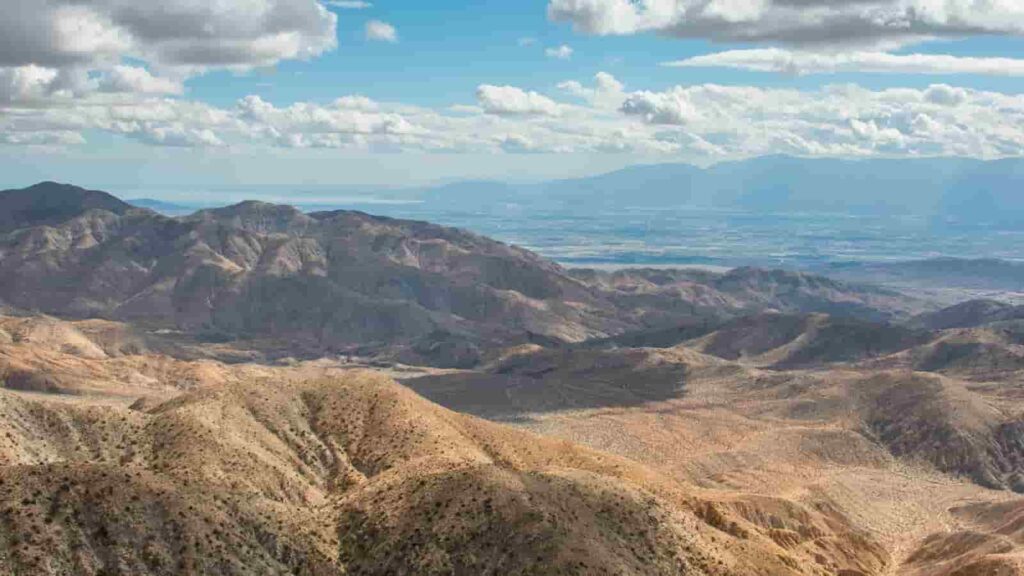
Lian Law / Keys View
Perhaps, the first thing you should do in Joshua Tree is to get a nice panoramic view of the park.
One of the “must-see” locations in Joshua Tree National Park is Keys View, formerly known as Salton View.
This well-known location offers panoramic views of the Coachella Valley.
Travel from a valley full of wonderful Joshua Tree to the top of a mountain with a breathtaking view of the entire region in about ten minutes by deviating from the main road.
In addition, on some clear days, Signal Mountain in Mexico is visible. Vistas that extend all the way to the Salton Sea in the south are also visible here.
When you get to the Key Views, you can also see Mt. San Jacinto and Mt. San Gorgonio, two of the highest mountains in Southern California, as well as the San Andreas Fault down in the valley.
Furthermore, in the wintertime, you can see several snow-capped mountains as well as the Salton Sea.
On a clear day, you should definitely visit the location. You will feel on top of the globe with a view that extends for miles and miles.
Though it is windy up there, you might want to have an ear covering with you.
This is a very popular place! So parking can be difficult.
Get there early to enjoy and take in all the view has to offer. You don’t want to miss the sunset here!
Address: Joshua Tree, California, United States
2. Cottonwood Spring Oasis
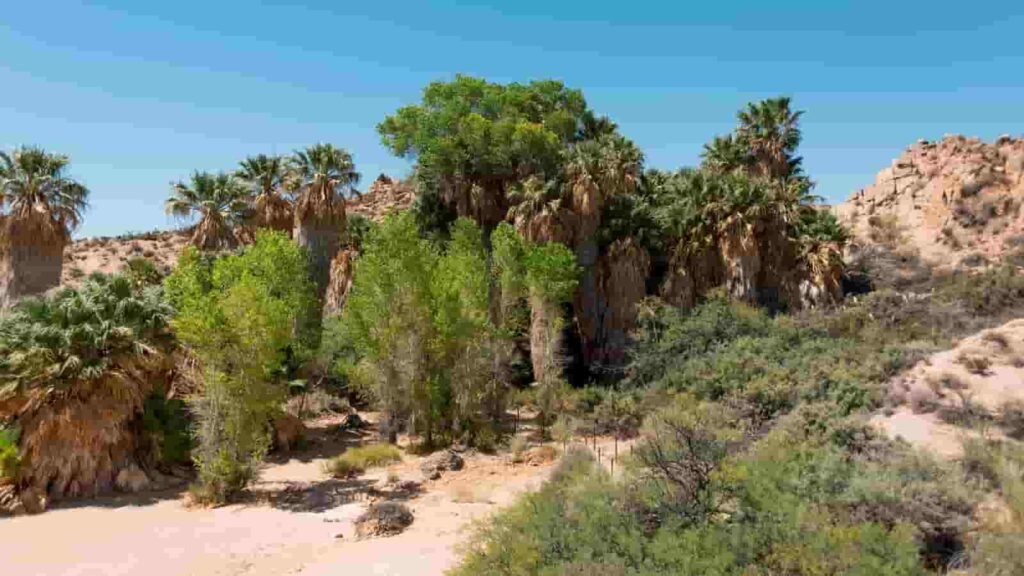
Brad Sutton / Cottonwood Spring Oasis
One of Joshua Tree National Park’s most stunning and strangely underrated locations is Cottonwood Spring Oasis.
The oasis may be seen right away in the wash below from the parking lot.
Over 500 liters of water are being forced daily to the earth’s surface as a result of earthquake activity this spring.
Furthermore, it is one of just five locations in the park that are suited for the native fan palms, some of which are close to 100 years old.
This spring, however, also has another traditional desert tree; the cottonwood in contrast to the other four park oases, which don’t.
Whether it’s the spring or a microclimate or something else, the flora here is very different from what you see in the rest of the park
However, October is a great time to see the golden cottonwood leaves contrasted against the palm fronds’ green and the sky’s blue.
In addition, birds of many types flock to Joshua Tree National Park because of the Cottonwood Spring Oasis.
Bird watching is a well-liked activity here. You will frequently see birds like hummingbirds, Gambel’s Quail, and American Bushtits.
The best approach to take in Cottonwood Spring Oasis may be to take some time to relax, sit down, and listen.
You can also take some time to listen to the birds’ songs, the wind blowing through the leaves, and the languid pace of life in the desert at one of the park’s best birding spots.
This is a fantastic place to visit any time of the year.
Address: Lost Palms Oasis Trail, Joshua Tree National Park, CA 92277
3. Hidden Valley Nature Trail, Joshua Tree
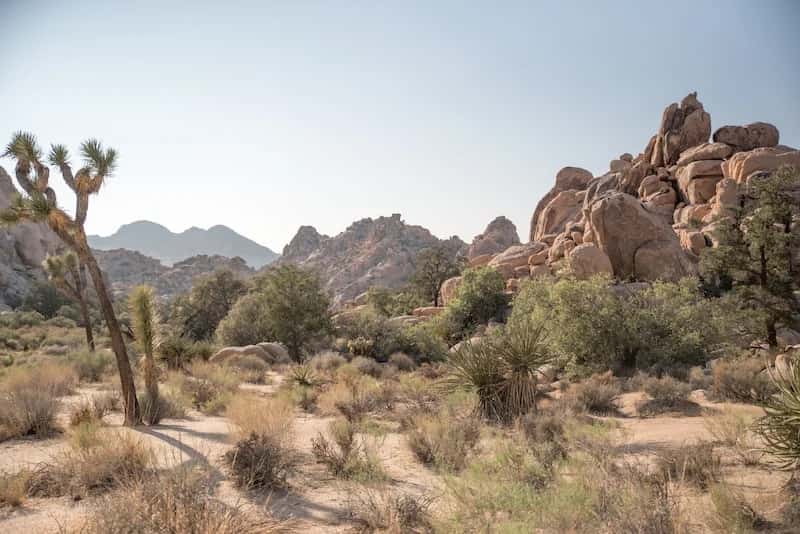
The Hidden Valley Nature Trail, Joshua Tree
Hidden Valley in Joshua Tree park is the place for you if you’re searching for a short hike that’s also quite beautiful.
Situated not far from Park Boulevard, the trail introduces visitors to the characteristic geology and vegetation that Joshua Tree is known for.
In fact, it is one of the park’s classic paths.
The recognizable golden granite formations of the park surround this sandstone valley on all sides.
This site is reported to have been widely known to 19th-century cattle rustlers who would hide their bovine hoards here in addition to being a wonderfully protected location.
Furthermore, interpretive panels on the nature walk provide information on the region’s geology, culture, and wildlife history.
You might also be able to see rock climbers on challenging climbing routes nearby, off the trail.
The “Giant Burrito,” a monolith much-liked by climbers and hikers, is also located along the Hidden Valley Nature Trail.
Although there aren’t many Joshua trees in the area, the many boulders and rock formations are nevertheless a striking sight for those who enjoy nature and photography.
There is shade along the Hidden Valley climb, in contrast to many Joshua Tree hiking trails that are entirely exposed and subject you to the intense sun.
The rock formations and landscape here are so beautiful and this is definitely a must-do in Joshua Tree park.
Address: 74485 National Park Dr, Twentynine Palms, CA 92277, United States
4. Keys Ranch
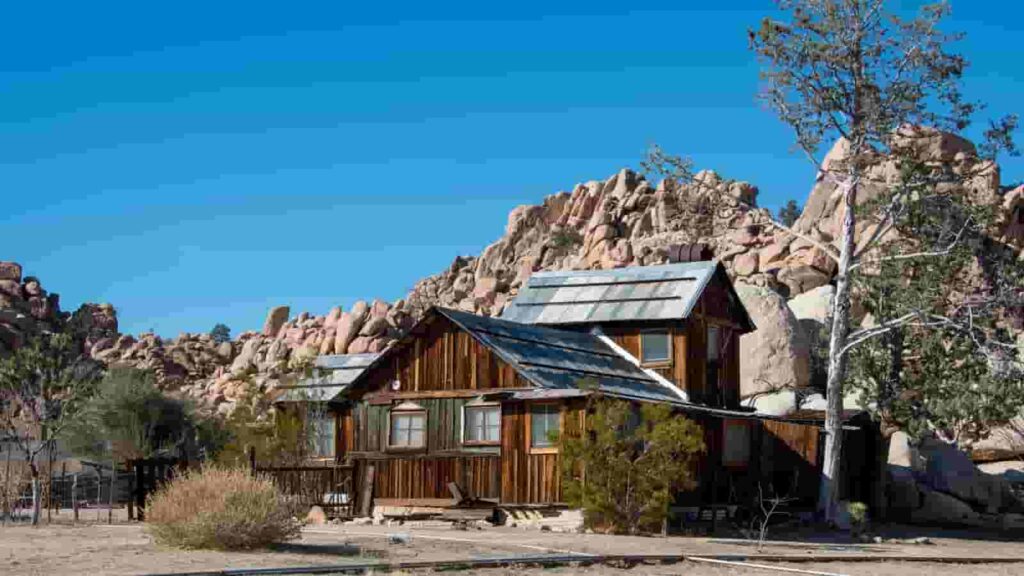
Lian Law / Keys Ranch
The Keys Ranch is a testament to early habitation in the Joshua Tree National Park.
The building, which is a part of Joshua Tree National Park’s National Historic Register, is situated in a secluded canyon with rugged terrain.
William Keys established this ranch after initially relocating to the desert to pursue gold and establish a livelihood through mining and ranching.
Furthermore, William and Frances Keys and their children resided in Keys Ranch for more than 60years.
They were able to create a successful ranch and mining enterprise in a harsh area.
The colorful account of Bill and Frances’ 60 years of joint labor to build a livelihood and raise their five children in this outlying area is part of the ranch’s tour.
The orchard has been replanted, the ranch house, schoolhouse, store, and workshop are still standing, and the grounds are littered with vehicles and mining machinery.
Only guided, ranger-led trips that have been pre-registered are permitted at Keys Ranch.
Address: Twentynine Palms, CA 92277, United States
5. Heart Rock, Joshua Tree
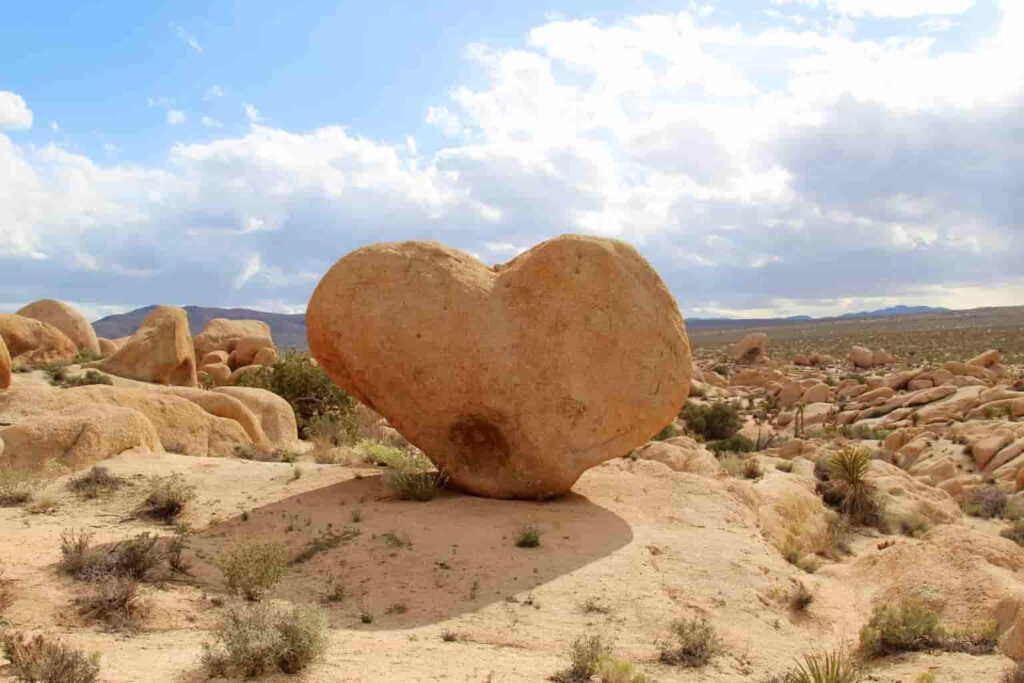
Heart Rock
Rocks at Joshua Tree National Park has some surprisingly weird and unique names and Heart Rock is no different.
Heart rock is a heart-shaped rock formation in Joshua Tree National Park and is located near the Arch Rock trail.
The rock itself rises over a boulder field near the well-known Arch Rock in the Joshua Tree desert and is around 10 feet tall.
Although Heart Rock is a well-known landmark, the National Park Service has not recognized it and there is no official established trail to reach there.
The extremely well-liked Arch Rock Trail is frequently hiked in conjunction with this one.
Although it is advised to hike this trail all year round, it is best to start before 9 AM in the summer.
Since there is no dependable phone connection in the area, downloading your direction and map beforehand is a smart idea.
Address: Joshua Tree, California, United States
6. Arch Rock
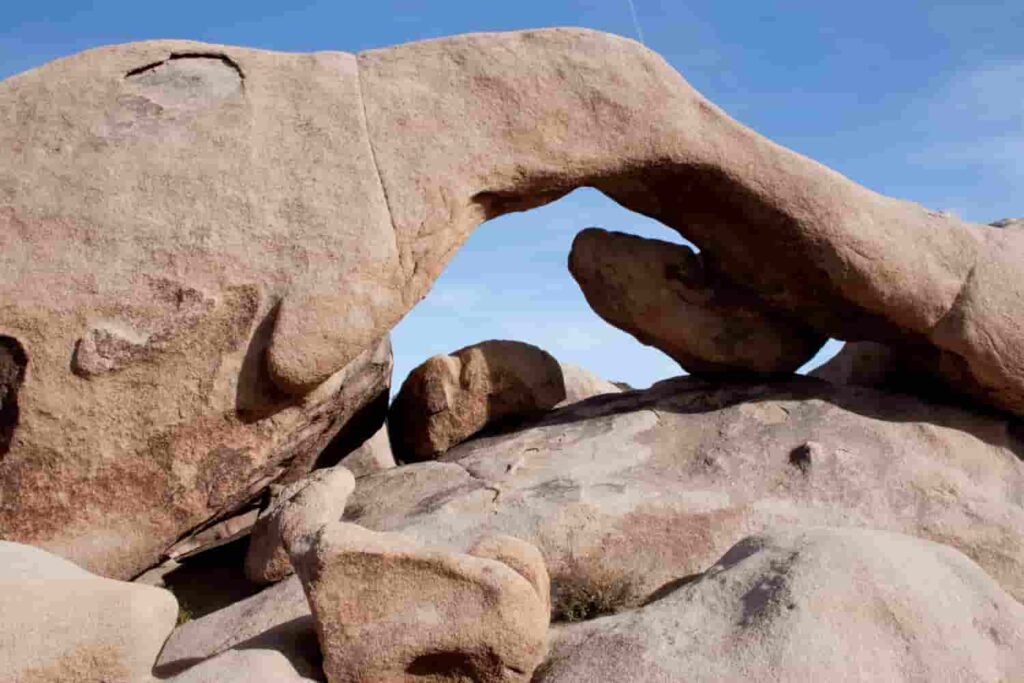
Arch Rock
Not far from heart rock is the arch rock which is one of the most recognizable formations in Joshua Tree National Park.
This hike is an absolute must in Joshua Tree.
Visiting Arch Rock is unquestionably among the top things to do in Joshua Tree National Park if you want to view some amazing rock formations.
The rocks are like a playground. Be prepared to climb some rocks, but it is relatively easy.
In order to get to the rocks, follow the Arch Rock trail.
In addition, the trail itself is only a 0.5-mile hike and is clearly marked.
The area is also very accessible, so hikers of all experience levels will enjoy exploring it.
Additionally, the nearby White Tank Campground allows you to spend the night stargazing.
Address: Twentynine Palms, CA 92277, United States
7. White Tank Campground
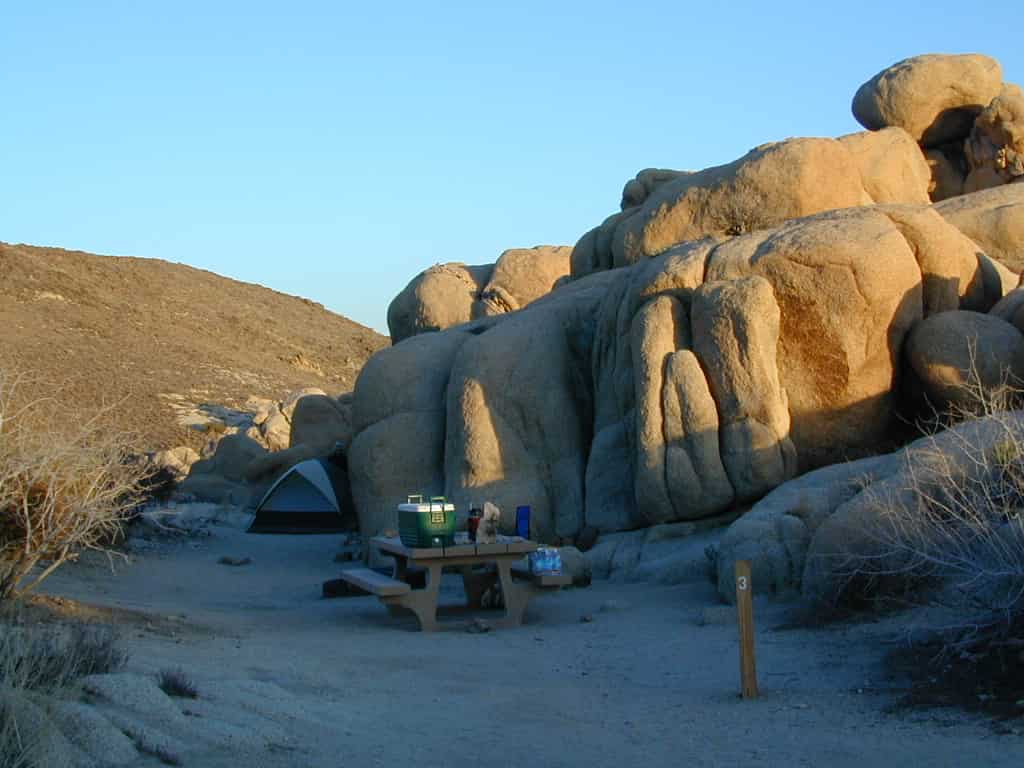
White Tank Campground
The 15 campsites in White Tank campground, which lies in the center of Joshua Tree National Park, are first-come, first-served.
The campsite is a great camp spot for tents and vans among large boulders.
It is surrounded by some of the most scenic desert landscapes in the US.
In addition, arch Rock is literally right behind the campground.
Although the views and surroundings are comparable to those of any other campground in the park, the campground tends to receive the fewest people.
Sites for camping can accommodate tents, trailers, and RVs (up to 25 feet).
Additionally, each campground features a grill, picnic table, fire ring, and dirt parking area. There is no water at the campsite, however, there are available vault toilets.
Camping, hiking, biking, rock climbing, bouldering, stargazing, and seeing wildlife are all examples of outdoor activities to do here.
Come for a day or camp in the white Tank Campground and the entire Joshua Tree National Park experience!
Address: White Tank Campground, 2 White Tank Campground Rd, Twentynine Palms, CA 92277, United States
8. Cholla Cactus Garden
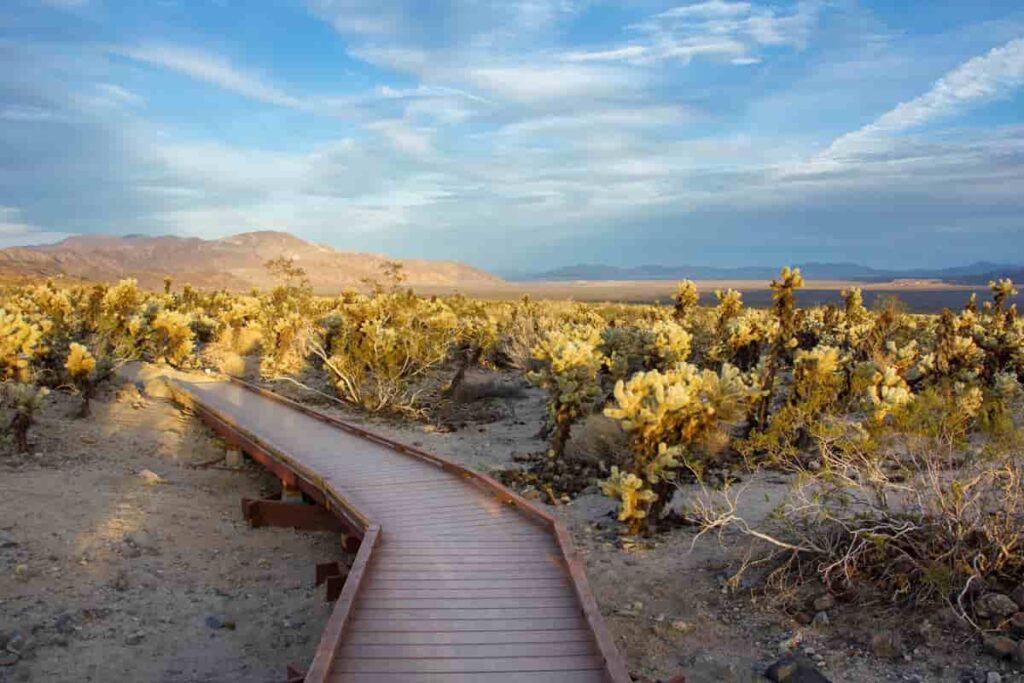
Brad Sutton / Cholla cactus garden Joshua Tree
Make sure to add the cholla cactus garden to your list if you are going anywhere in Joshua Tree park.
The Cholla Cactus Garden is tucked away on the side of Pinto Basin Road and is a nice place to stop and get some fresh air.
Furthermore, it’s a location that’s definitely worth stopping at while on your road trip in the park, with thousands of cholla cacti sprawled out in front of you.
Additionally, the cholla is known as the teddy bear cactus, but this is one teddy bear you do not want to hug!
The cactus is covered in spines that, with just a gentle touch, will cling to your skin.
This protective system helps them survive in the desert, but it can be uncomfortable for those who stray from the track.
Address: Joshua Tree National Park, CA, United States
9. Hall of Horrors
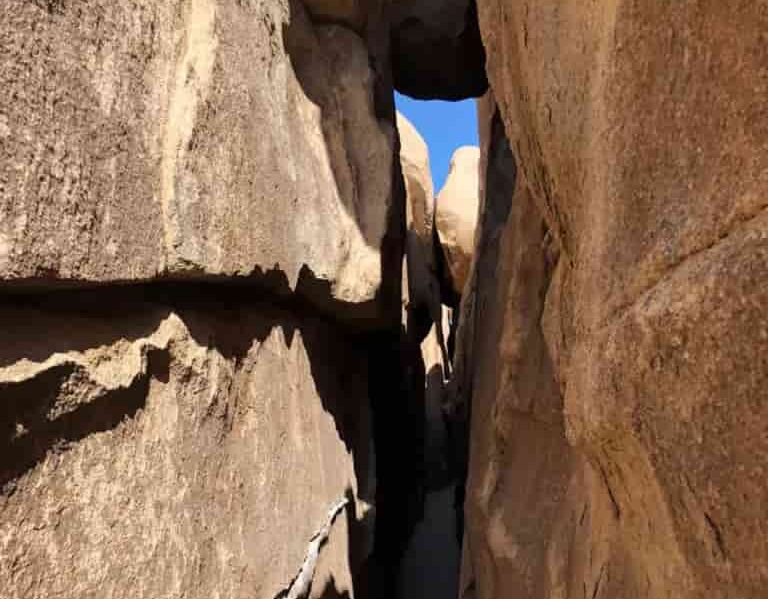
Hall of Horrors, Joshua Tree
Not as scary as it sounds, but you might want to take your hiking boot along while coming here.
The hall provides visitors with bouldering areas and narrow passages filled with stones.
It is the kind of location that is very spectacular to behold, and you might even come across some of the tight passages that can be found along routes and trails because it is filled with large and scattered stones.
Despite being enormous, the rocks are simple to climb due to their rough surface.
You can visit the hall any time of the day, be it morning or evening, and have spectacular views. In addition, you’ll be endlessly fascinated by the shadows and silhouettes that cover the landscape.
Address: Park Blvd Hall of Horrors Area, California, Joshua Tree National Park, CA 92277
Planning to see more of California? Why don’t you check out our list of things to do in Palm Desert, Fresno, San Luis Obispo, Pismo Beach, and Anaheim?
10. Desert Queen Mine, Joshua Tree
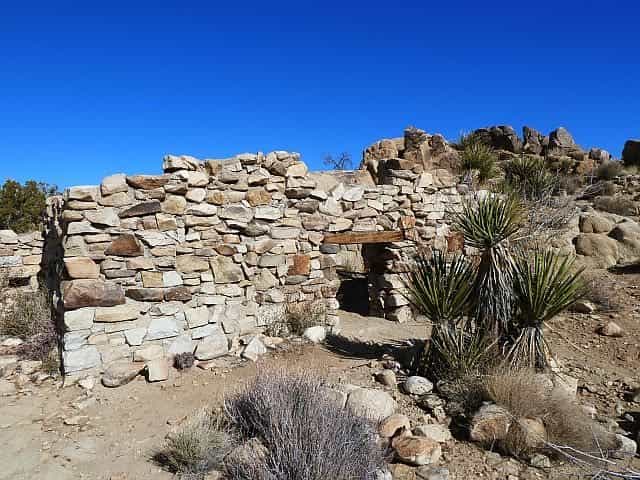
Desert Queen Mine, Joshua Tree
The short and beautiful trip to the Desert Queen Mine offers an intriguing look back at the park’s past.
Desert Queen Mine is one of this area’s numerous abandoned mining sites.
You’ll find the Desert Queen Mine near the middle of Joshua Tree National Park.
In addition, the Desert Queen Mine, which previously operated on land that is now a part of Joshua Tree National Park, was a successful mine.
Furthermore, despite being down a dirt road, the trail is well-traveled, and the short distance will either take you to a viewpoint or allow you to explore the mine closely.
This trip can serve as a starting point for excursions to sites like the Eagle Cliff Mine.
After completing your exploration, you can continue to the Eagle Cliff Mine.
Address: Twentynine Palms, CA 92277, United States
11. Eagle Cliff Mine, Joshua Tree
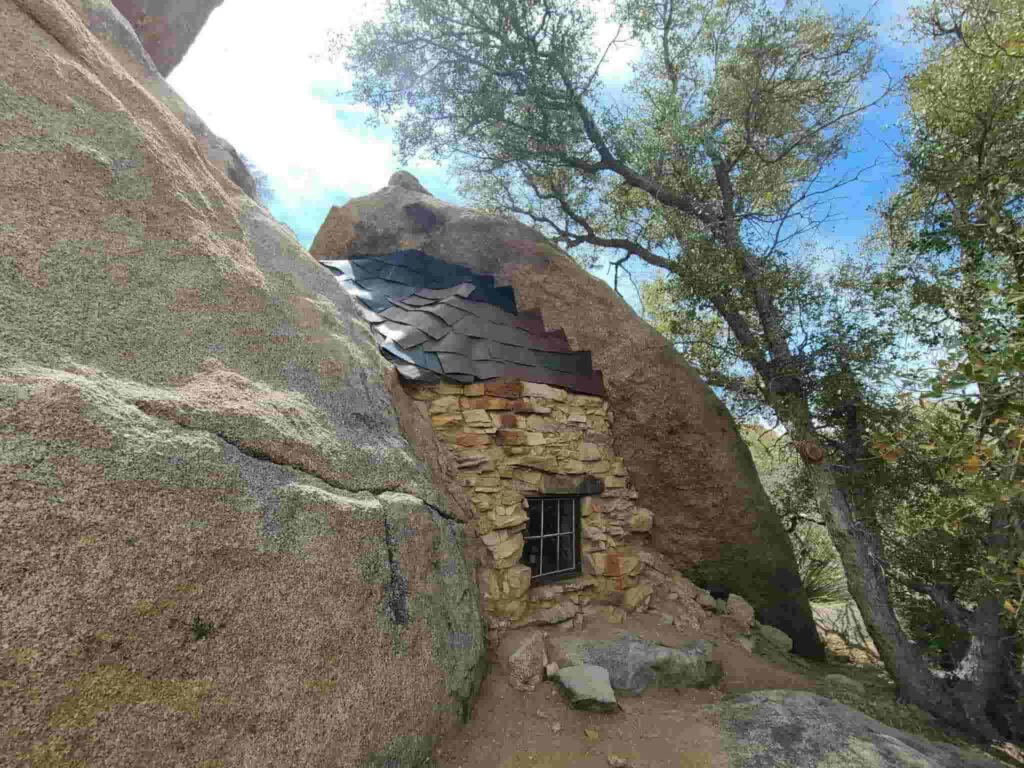
Carthy Farfan / Eagle Cliff Mine, Joshua Tree
One nice place in Joshua Tree National Park that isn’t added to the official map is the Eagle Cliff mine.
The fact that it isn’t marked on the Joshua Tree official map adds to the attractiveness of this hike.
This location is the distinctive mining lodge, perched high on a mountainside and nestled between two boulders, rather than the mine, which is fully closed off.
Furthermore, the mine dates back to 1895, which makes it one of the oldest mining enterprises in the park.
Even though the mine is old, it is still largely undamaged.
You must work for everything the Eagle Cliff Mine Hike offers.
Despite being a short path, there is some scrambling involved because of the hike’s abrupt elevation change.
However, as you reach the summit, you are rewarded with breath-taking vistas and the chance to explore the quirky Eagle Cliff Boulder House.
Surprisingly, you will get to see jars, jugs, and other pieces right inside the small three-wall house.
Address: Joshua Tree, California, United States
12. Skull Rock
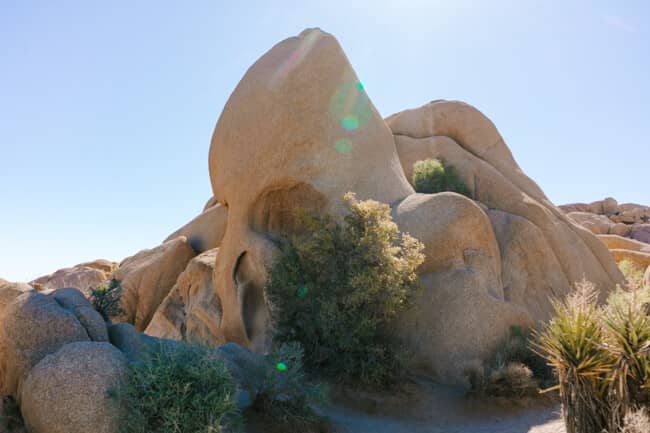
Skull Rock
Located just right off the road, skull Rock in Joshua Tree National Park is a cool area with many interesting rock formations to see and climb.
The skull-shaped rock formation started long ago when the granite started to dissolve due to raindrops eroding the granite.
Two hollowed-out eye sockets eventually formed, and the rock started to resemble a skull, as more rock was worn, more water pooled, and so on.
Furthermore, there is much more to see than just the one rock here. Take your time looking around and scaling the rocks.
Address: Joshua Tree, California, United States
13. Barker Dam, Joshua Park
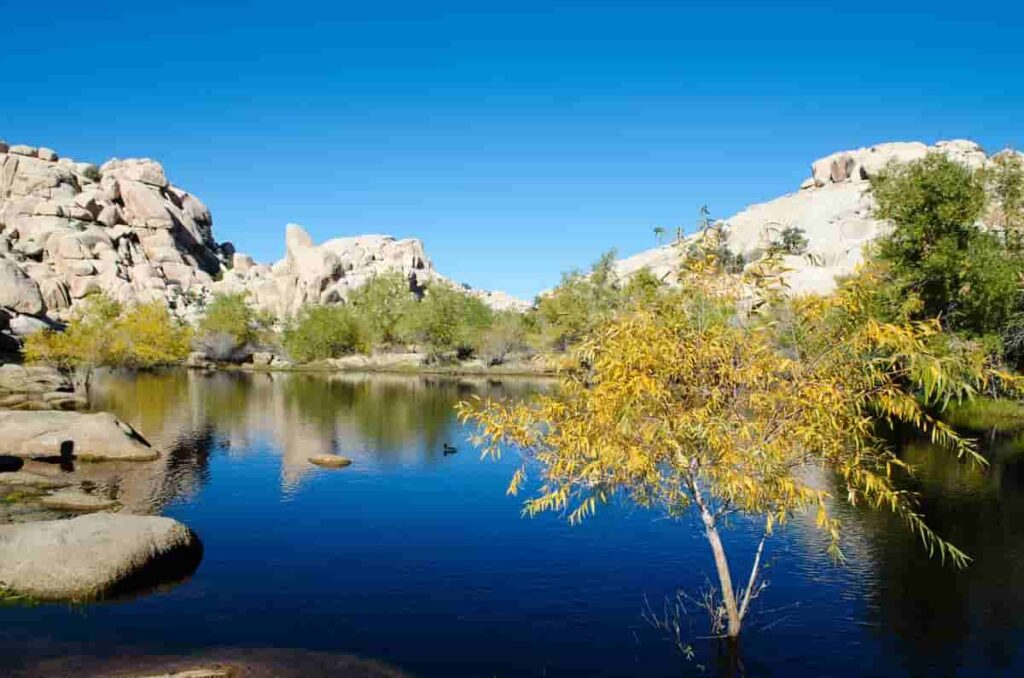
Barker Dam
At the southernmost point of the Wonderland of Rocks, a small, quick nature walk called the Barker Dam loop meanders among a striking collection of stones.
Rock climbers, strollers, and hikers all frequent this location, and with good reason.
The route is simple, there is little height increase, and the scenery is breathtaking.
Furthermore, it’s a 1.3-mile circular trail, but Barker Dam is the kind of trek that’s modest but mighty!
In fact, it’s an utterly unique place to take in the views of the park itself, with enormous Joshua trees dotting the landscape.
Cattle ranchers used to reside close to Barker Dam as well.
You can still spot even the remains of a water tank along the trail.
Additionally, there aren’t many spots where you can view the Joshua Tree rock formations reflected in still water in such a lovely way.
You will also see some of the tallest trees in Joshua Tree National Park if you continue on the loop past the dam.
Address: Joshua Tree Parkway, Twentynine Palms, CA 92277, United States
14. Ryan Mountain
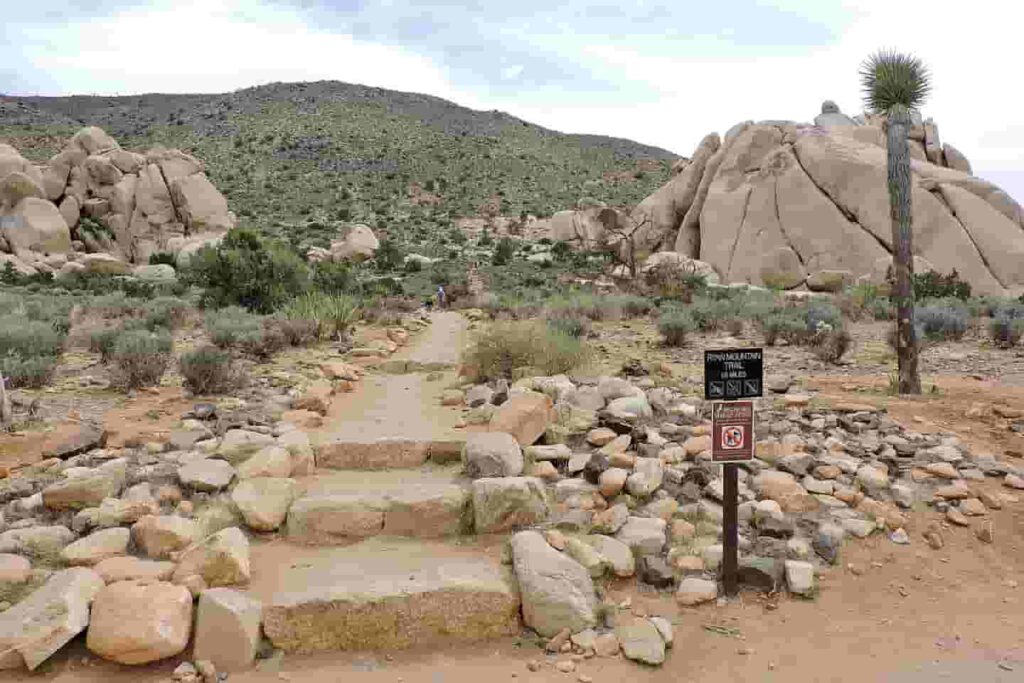
Ryan Mountain
If you are someone who likes challenges and also wants to get a panoramic view of Joshua Tree park, Ryan mountain is just the right place.
The Ryan Mountain trail climbs along the Western face of one of the most notable mountains in Joshua Tree National Park.
Additionally, the trail begins quite flat but gradually increases elevation as it ascends the mountain.
It takes around three hours to accomplish the somewhat difficult trek to the top.
Similarly, you’ll travel through several dips and twists on this three-mile hike up a desolate mountainside, but when you reach Ryan Mountain’s crest, all your hard work will be rewarded.
This is one of the well-liked climbs since it offers expansive panoramas of the park.
Put on some sunscreen on and off you go!
Address: Joshua Tree, California, United States
15. 49 Palms Oasis
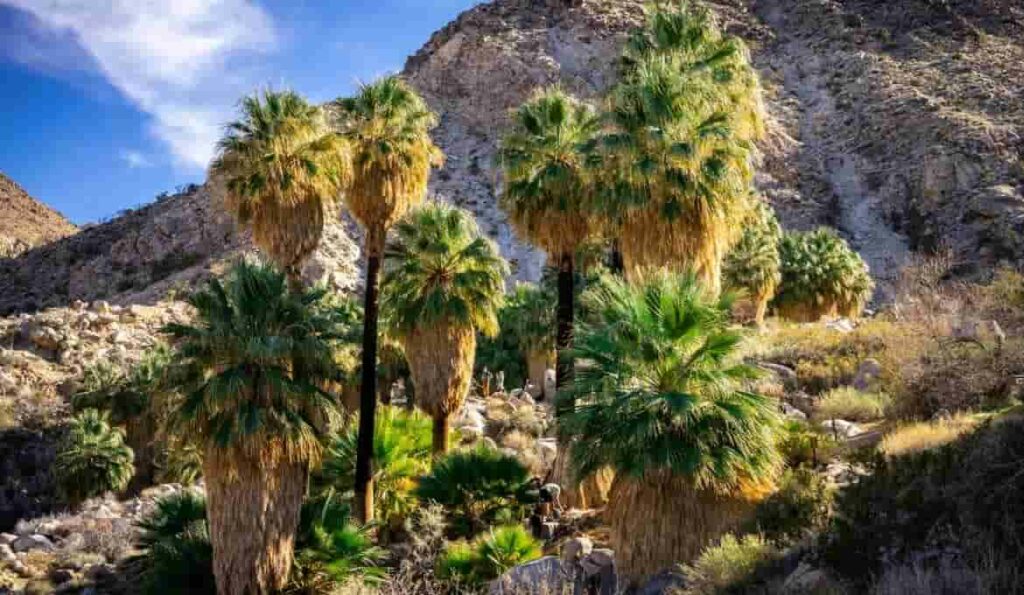
49 Palms Oasis
One of the desert oases in Joshua Tree National Park is Fortynine Palms Oasis, which is accessible to the public from fall through spring.
This oasis, which can be found in the park’s northern region, offers a haven amidst the arid mountains.
Furthermore, you may reach a spotless fan palm oasis by hiking along the 49 Palms Oasis Trail.
As you ascend the ridge on the way to the oasis, you’ll get to see some beautiful views along the way.
In fact, this tiny oasis makes it possible for life to flourish in this ostensibly hostile environment by offering a dependable source of water.
After 1.5 km, you arrive at a grove of tall fan palms that are watered by a refreshing spring. The spring is a favorite spot for bighorn sheep to drink.
The 49 Palms Oasis is the ideal location to have a snack and also relax while admiring the breathtaking environment.
Address: Joshua Tree, California, United States
16. Geology Tour Road
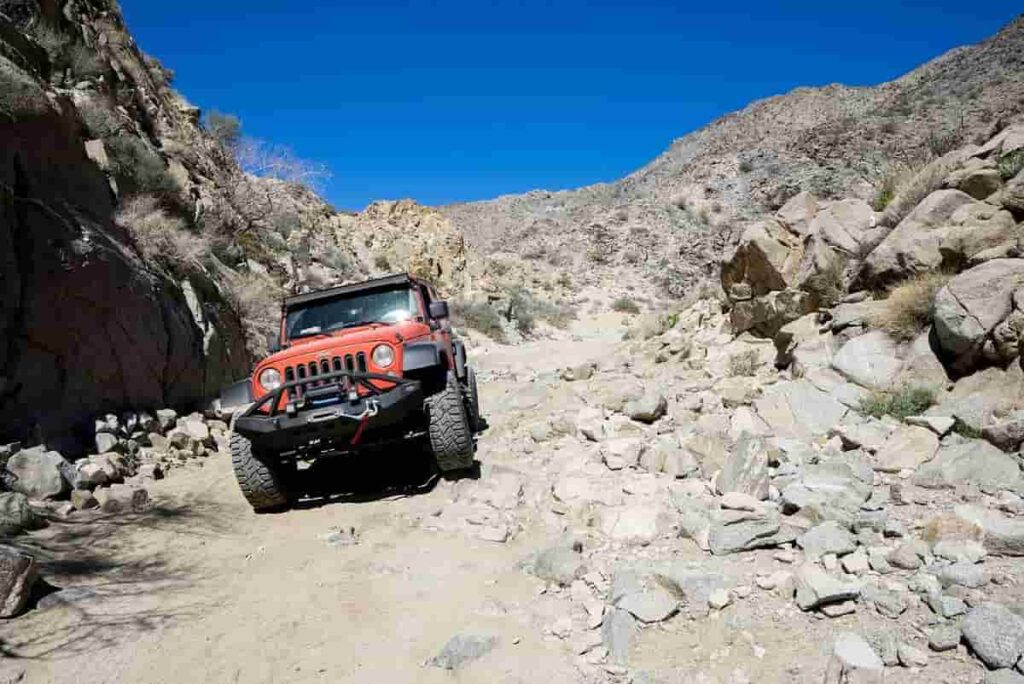
Geology Tour Road
This is a fantastic, 2-3 hour circular road that allows you to comfortably take in the desert scenery.
A diverse range of landscapes and formations can be seen from areas along the road, occasionally with wildlife.
A four-wheel drive is recommended for accessing the Geology Tour Road.
You will need approximately two hours to travel the entire length of the road.
Access to picturesque pullouts, a few hiking trails, and a few climbing access routes are all available from the road.
Address: Joshua Tree, California, United States
17. Lost Horse Mine
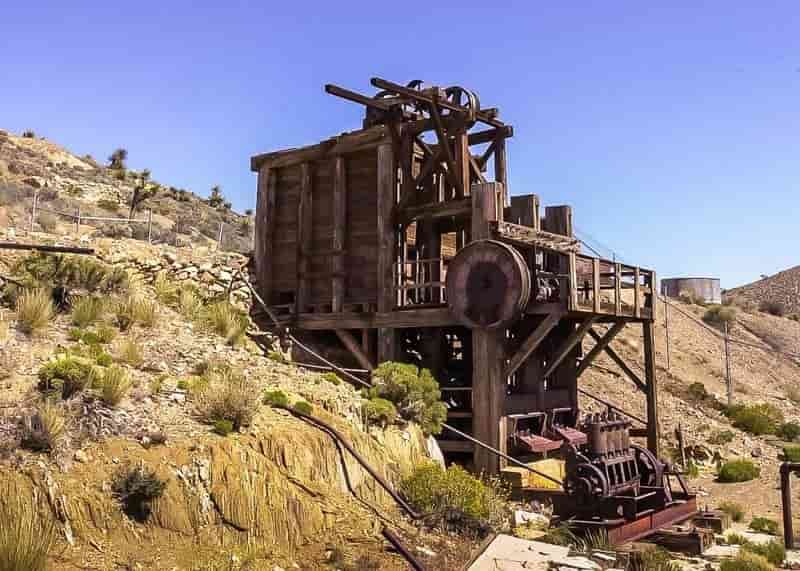
James Kaiser / Lost Horse Mine
One of the best-preserved mines in Joshua Tree National Park is the resilient remnant of the California Gold Rush known as the Lost Horse Mine.
Similarly, Lost Horse Mine was one of the richest mines in Joshua Tree National Park.
The mine’s history began with Johnny Lang, a rancher who acquired the claim in 1890 for $1000.
In its 37 years of operation, this mine was exceptionally productive, yielding more than 10,000 ounces of gold and 16,000 ounces of silver.
In addition, the fairly challenging 4-mile Lost Horse Mine Trail begins off Keys Road and is categorized as being difficult. You can also hike the lengthier, nearly 7-mile loop trail.
Joshua trees, yucca, and springtime wildflowers can also be seen along the trail.
Beyond the mine, you can also climb the hill to the lookout for views of the valley.
Address: Lost Horse Mine Spur, California, United States
18. Joshua Tree Music Festival
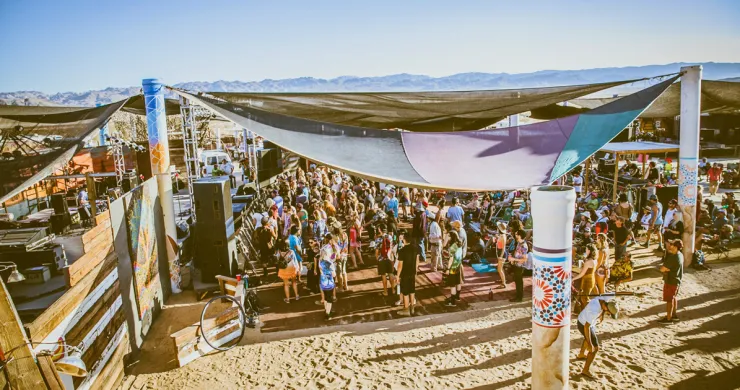
Mariya Stangl Photography / Joshua tree music festival
Check out the Joshua Tree Music Festival if you enjoy desert-themed music festivals.
The event combines the ferocious character of the desert with stirring music from all around the world to create a joyful haven for music lovers.
Furthermore, this event, which is held in May and October, provides much more than just live music.
In addition, a full range of yoga classes from sunrise to sunset, and 27 different music play shops are available. A late-night Astronomy theatre and a World Market also serve to further welcome festival goers.
While you’re there, take a yoga session, or a sound bath.
You will also meet lots of new people.
In short, there is something for everyone to enjoy, thanks to the variety of musicians and entertainers.
Who knows music and desert could blend so well?
Address: Joshua Tree, California, United States
19. Jonny Lang Grave, Joshua Tree
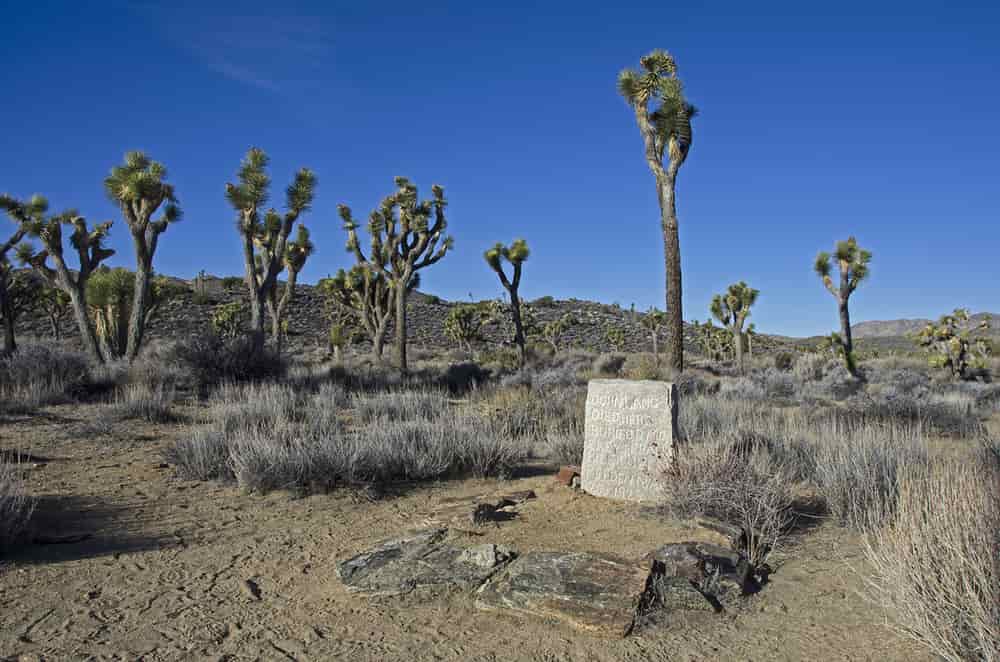
Elliot Koeppel / Jonny Lang Grave
Jonny Lang is part of the interesting and colorful history of the area.
He began as a cattle rancher after being born in Texas in 1850.
He and his father moved west in the 1890s with their grazing cattle to look for the elusive yellow stone, they sold their cows. Lang’s efforts eventually paid off.
The Lost Horse was the most prosperous mine in the region.
The first ten years of the Lost Horse Mine’s operation at the beginning of the 20th century saw the extraction of the majority of its nine thousand troy ounces of gold.
Furthermore, every account of how the mine was located includes Johnny Lang, and the constant denominator is that the renowned Jonny discovered the mine while pursuing his lost horse.
How did Johnny come to be buried here, close to the path that goes to the Lost Horse mine?
He had settled in the former cookhouse of the abandoned Lost Horse mine.
Jonny set out to walk to town for supplies in the winter of 1925, but due to his illness, he passed away from exposure along Keys View Road. Two months later, Bill Keys discovered his body and buried him there.
In 1983, grave robbers committed their crimes late at night. They disturbed Johnny’s grave and stole some of his remains, including his skull. However, they were never caught.
So whenever you find yourself at Joshua park, lost horse mine exactly, you will always remember what brought about the name.
Address: Joshua Tree, California, United States
20. Eureka Peak
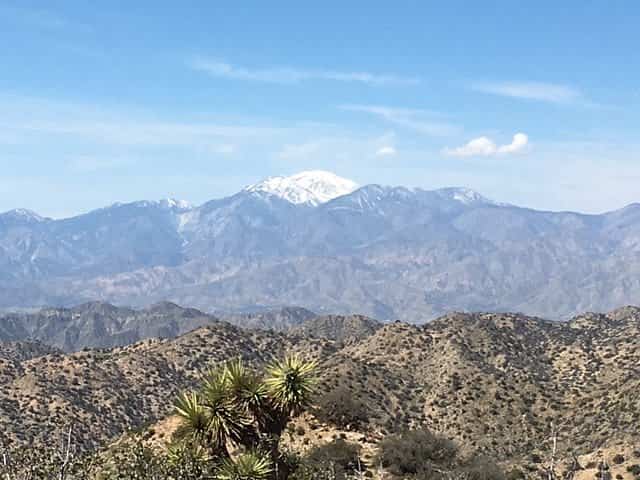
Eureka Peak
At 5516′, Eureka is Joshua Tree National Park’s fourth-highest peak, behind Inspiration Point, Queen Mountain, and Quail Mountain.
Like Keys View, Eureka Peak provides views of San Jacinto Peak, the Mojave Desert, and the Coachella Valley.
Similarly, the peak, maybe the 5000+ mountain with the easiest access, is the “traditional path”. However, the summit is not usually visited because of its isolation from the rest of the park.
The majority of this route is through wide arroyos and sandy washes.
Although the sand can be deep in certain spots, these routes are indicated as being in a park.
Riding a horse on this trail is encouraged, as it is horse-friendly.
Address: Joshua Tree, California, United States
21. Cap Rock
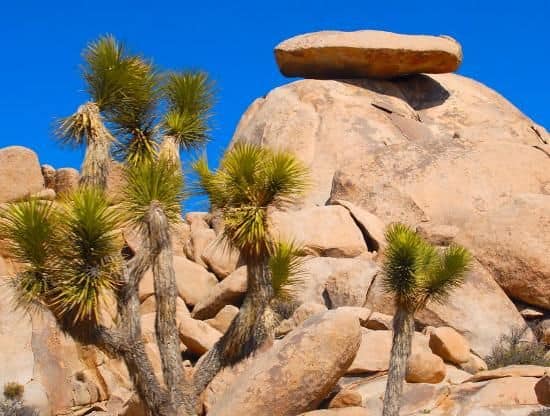
Cap Rock, Joshua Tree
If you want a great place to photograph Joshua Tree, here’s a great location.
The well-known rock formation is situated right in the middle of Joshua Tree National Park.
Cap Rock is a convenient site on the north end of Keys View Road, close to Park Boulevard.
Along with the unusual rock structure, Cap Rock also has a picnic area with grills and a nature trail that visitors can use to take a quick stroll around neighboring rock formations and learn more about the local environment.
Furthermore, flat dirt and gravel surfaces can be found all around Cap Rock and the nature walk.
Address: Cap Rock Nature Trail, Twentynine Palms, CA 92277, United States
22. Berdoo Canyon Road
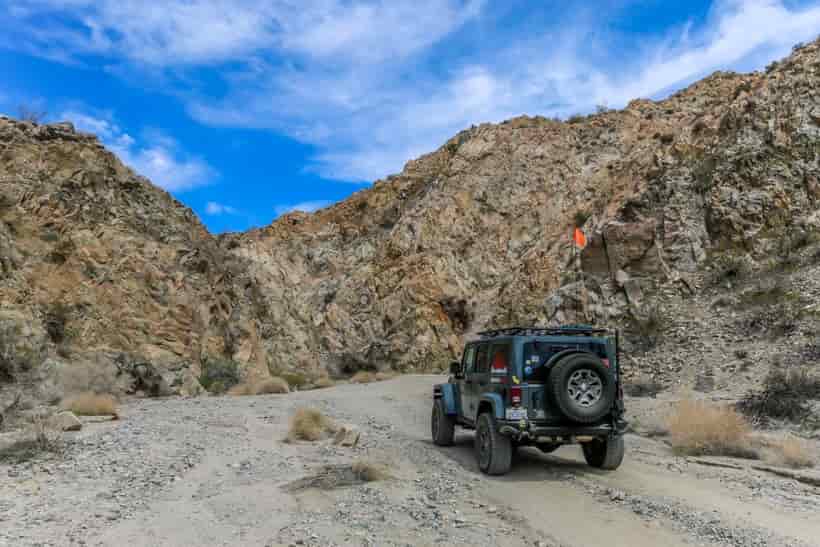
Berdoo Canyon Road
Perhaps you are looking for something more challenging than the Geology Tour road? Then Berdoo canyon road is your go-to road.
Located in the Joshua Tree National Park, Berdoo canyon road connects the geology Tour road to Dillion road.
For the first mile, this road is paved; gradually, it turns to dirt.
It is required to have a car with 4-wheel drive and high clearance to navigate the terrain properly.
Although the track is quite simple, there are a few obstacles and some deep sandy areas that might be challenging if you don’t have enough clearance.
Furthermore, the road has some very steep parts, with some of the ramps reaching an 11 percent maximum gradient.
Address: Joshua Tree, California, United States
23. Wall Street Mill
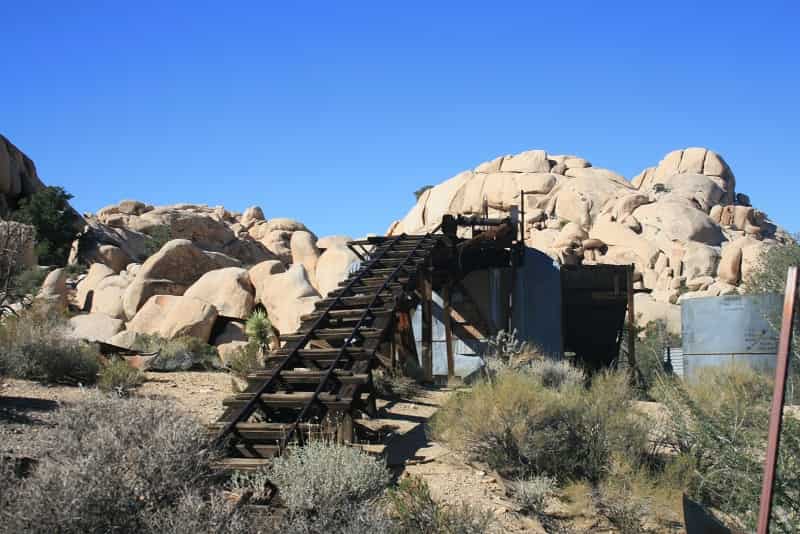
Wall Street Mill
Another one of Keys’ local companies in Joshua Tree National Park was The Wall Street Mill.
The Mill was the most advanced and easily accessible gold stamp mill in the area.
In addition, the Mill is currently the best intact structure in the area, and getting there only requires a short, flat stroll.
With operations lasting until the middle of the 20th century, this gold ore-crushing mill is one of the park’s last intact mills.
Coming here is a terrific way to learn about the history and geography of the California desert (Joshua Tree).
A two-mile, easy climb leads to the ruins of a historic mill at Wall Street Mill.
Lastly, there are still a farmstead and mill at the trail’s conclusion, as well as a number of old, rusting cars nearby.
Address: Twentynine Palms, CA 92277, United States
24. Wonderland Of Rocks, Joshua Tree
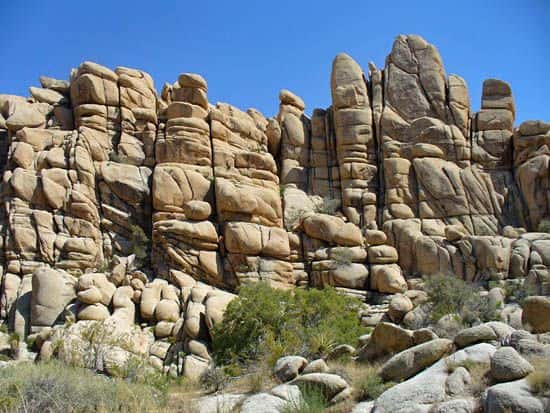
Wonderland Of Rocks, Joshua Tree
The Wonderland of Rocks, which occupies 12 square miles of Joshua Tree National Park’s northern region, is made up of large, jumbled rocks.
The region doesn’t just hold any old rocks, but heaps of smooth stones that appear to be thrown about randomly in the terrain.
While the majority of the park is covered in these lovely boulders, the Wonderland of Rocks region has the highest concentration.
In addition to some of the park’s Bighorn Sheep population, this granite maze is home to hidden oases, groves of Joshua Tree, and other wildlife.
Furthermore, the willow Hole Trail is the solely authorized route into the Wonderland of Rocks (or Willow Hole Joshua Tree).
Therefore, the Boy Scout Trail and this 6.8-mile trail have the same trailhead.
Address: Joshua Tree, California, United States
Final Remark
From several gold mines and gold processing structures to hiking trials, numerous rocks, and camping sites, this park offers more than just views into the past.
Hike, learn, climb, you can’t get enough of this park.
